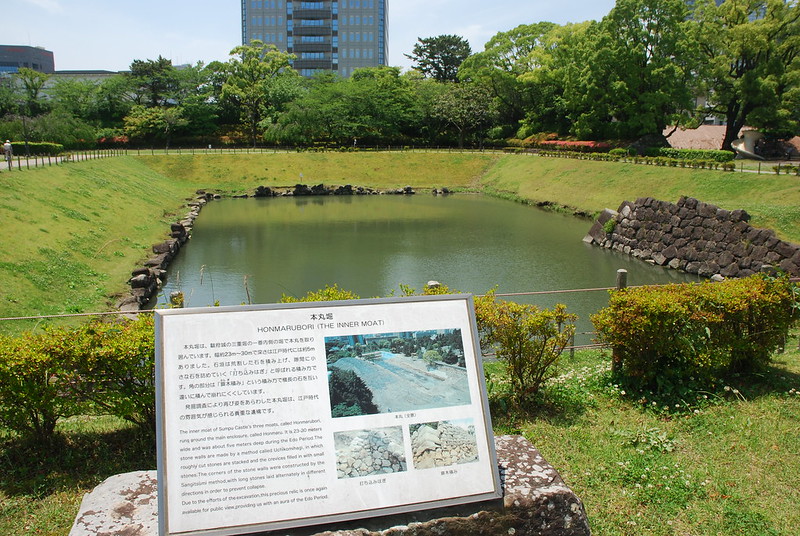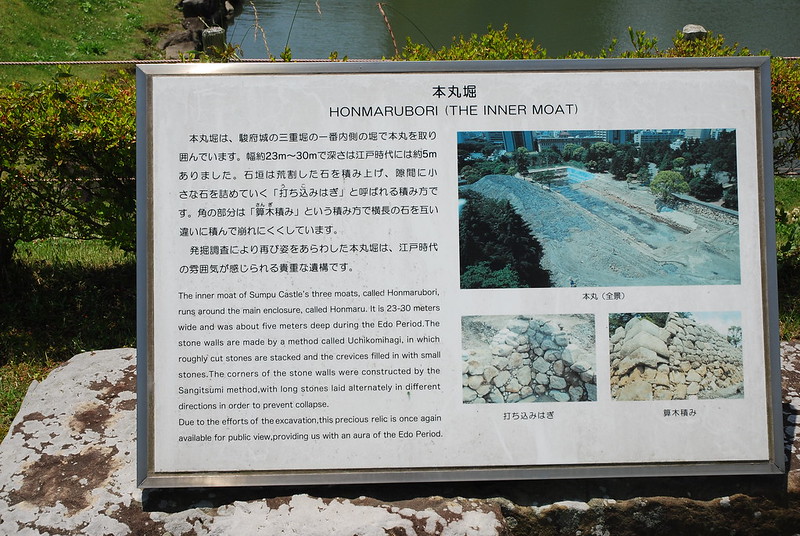駿府城には外堀・中堀・内堀と3重の堀がありましたが、そのなかでいちばん内側の本丸を取り囲んでいた堀(内堀)を「本丸堀」と呼んでいます。
1896年(明治29年)の歩兵第34連隊の誘致に伴い、本丸堀は埋められましたが、1990年(平成2年)の発掘調査によりその位置を確認し、現在公開されているのは南東の角部分になります。
堀の幅は約25mで両側は石垣となっており、本丸側石垣のうち、下段の2~3段は、慶長期築城当初の古い積み方が残っています。
東側(東御門から入って正面)から見た本丸堀です。



本丸堀
本丸堀は、駿府城の三重堀の一番内側の堀で本丸を取り囲んでいます。幅約23〜30mで深さは江戸時代には約5mありました。石垣は荒割りした石を積み上げ、隙間に小さな石を詰めていく「打ち込みはぎ」と呼ばれる積み方です。角の部分は「算木積み」という積み方で横長の石を互い違いに積んで崩れにくくしています。
発掘調査により再び姿をあらわした本丸堀は、江戸時代の雰囲気が感じられる貴重な遺構です。
北側からから見た本丸堀です。


HONMARUBORI (THE INNER MOAT)
The inner moat of Sumpu Castle's three moats, called Honmarubori, runs around the main enclosure, called Honmaru. It is 23-30 meters wide and was about five meters deep during the Edo Period. The stone walls are made by a method called Uchikomihagi, in which rougly cut stones are stacked and the crevices filled in with small stones. The corners of the stone walls were constructed by the Sangitsumi method, with long stones laid alternately in different directions in order to prevent collapse.
Due to the efforts of the excavation, this precious relic is once again available for public view, providing us with an aura of the Edo Period.
さらに、1997年(平成9年)の発掘調査で、北東角部分の本丸堀も確認されています(二ノ丸水路のところ)。

